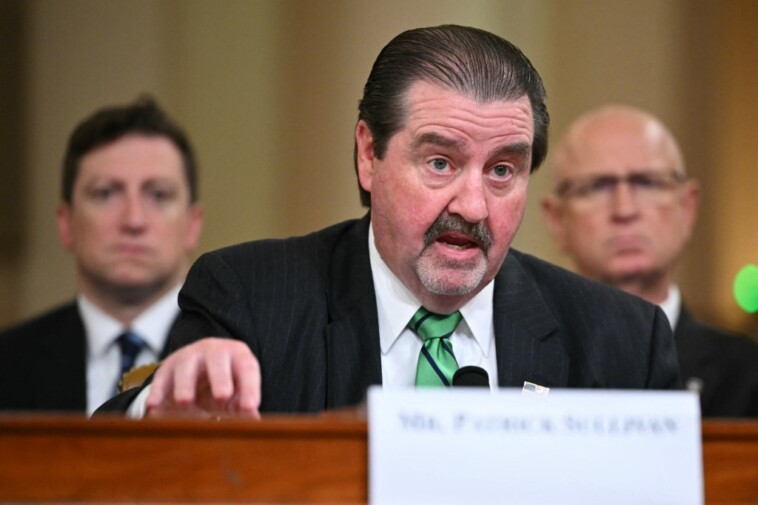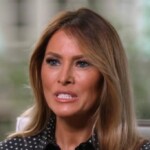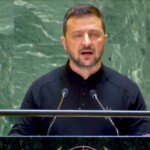A former Secret Service agent who served on two presidential details told House lawmakers Thursday that “very atypical” security protocols were in place at the July 13 campaign rally where former President Donald Trump was nearly assassinated.
Patrick Sullivan, a 20-plus-year veteran of the agency, told members of the bipartisan task force probing the attempt on Trump’s life in Butler, Pa., that the communications plan and placement of agents sharply deviated from ordinary security protocols.
Additionally, Sullivan said that lawmakers should consider requiring Secret Service officials to be more forthcoming about credible threats against protectees, which he said would have been a “tremendous game-changer” in a recent foiled Iranian assassination plot against the 45th president.
The day before the Butler rally, Pakistani national Asif Merchant was arrested and later charged with paying advances to men he believed to be contract killers tasked with rubbing out the Republican presidential nominee.
“The FBI had arrested a Pakistani national with ties to Iran that were putting down payments to kill President Trump the day before the Butler rally,” Rep. Michael Waltz (R-Fla.) told reporters during a recess. “And no one told the locals that were responsible.”
Sullivan took specific issue with having two separate command posts for Secret Service and local law enforcement, the lack of a single radio frequency to quickly communicate threats and the failure to secure the perimeter of the Butler Farm Show grounds.
“There were decisions that were not appropriate in my opinion, and I’m really appalled at the communications plan or lack thereof,” Sullivan told Rep. Laurel Lee (R-Fla.). “I cannot fathom how that would be acceptable.”
Another witness, Butler County Emergency Services Unit Commander Edward Lenz, said that the Secret Service never asked him to deploy snipers to the roof of the American Glass Research building, from where shooter Thomas Matthew Crooks took aim.
“We didn’t receive any direction from the Secret Service as far as how they wanted our sniper teams to deploy or what their actual mission would be,” Lenz testified. “So our snipers, on normal missions, they deploy more as marksmen observers.”
“As we understood it,” Lenz added, “[the plan] was to deploy sniper teams to overwatch the stage, the crowd, the venue area, where most of the people would be gathering.”
Sullivan also blamed the unidentified Secret Service lead agent on the day — who denied all responsibility for the security lapses in testimony to Senate investigators — for not securing the site or abiding by typical protocols.
“It is crystal clear in my mind from when I was an agent,” he said. “The site agent … crafts his or her plan, presents it to the lead advance agent. Ultimately, the lead advance agent is personally responsible for signing off on the entire advance package, all the sites, airport, motorcades.”
“Normal command posts should be the state and local police, Secret Service and other federal partners,” Sullivan also told task force ranking member Jason Crow (D-Colo.). “So this is very unusual. There should be just one overall command post.”
Sullivan further told Crow there should only be a single radio frequency monitored by the security detail of the protectee.
“If something happens, the security room’s responsibility is to immediately get on the radio, on the detail’s frequency and say, ‘There’s an issue. Remove the protectee from the stage,’” said Sullivan.
When Crooks was flagged as a suspicious person nearly 30 minutes before opening fire, Sullivan added, “it was probably going to be appropriate to remove the president from the stage.”
Sullivan also disagreed with past testimony from Secret Service Acting Director Ronald Rowe, who claimed counter-snipers typically set up near the protectee with their line of sight facing out toward the crowd.
“Generally speaking, the observation of the crowd is the responsibility of post standards and police officers posted in the crowd,” Sullivan contended Thursday. “Counter-snipers are supposed to handle threats outside the perimeter.”
“To a high degree of certainty, there are probably no weapons inside the secure area,” he pointed out, given that attendees have to pass through magnetometers to gain access to the event.
Rowe testified before a Senate hearing in July: “We should have had better coverage on that roof line. We should have had at least some other set of eyes from the Secret Service point of view, covering that.”
“That building was very close to that outer perimeter,” Rowe said of the roughly 130 yards between where Trump, 78, was standing and Crooks, 20, was shooting. “And we should have had more of a presence.”
Asked by Waltz whether additional resources were needed in the future to secure perimeters like the one at the Butler rally, Sullivan, who helped safeguard former Presidents Ronald Reagan and George H.W. Bush, suggested that would help.
Start and end your day informed with our newsletters
Morning Report and Evening Update: Your source for today’s top stories
Thanks for signing up!
“With additional resources that Trump’s protective detail had been asking for for years, the Secret Service agent today testified that that building would have been inside the perimeter and the fence that anyone could have approached that was even closer than the building would have been inside the perimeter,” Waltz later told reporters.
“So it was a denial of resources from Secret Service headquarters, in my mind, that made the details so reliant on locals.”
Crooks fired eight shots, striking Trump in the right ear, critically injuring rallygoers David Dutch, 57, and James Copenhaver, 74, and killing audience member Corey Comperatore, 50.
The shooter’s personal history remains shrouded in mystery due to the FBI’s slow dispersal of new information based on combing through digital devices, some of which involved encryption.
“We know nothing more about how he was radicalized,” Waltz added. “The FBI is stonewalling, and you heard bipartisan calls yesterday to start a subpoena process. … It should be unnecessary.”
On Wednesday, the Trump campaign announced that the Republican nominee would return to Butler to hold another rally on Oct. 5.








